
|
You entered: Saturn
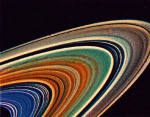 The Rings of Saturn
The Rings of Saturn
30.07.1995
Saturn's spectacular system of bright rings has been the subject of study and wonder since Galileo first turned his telescope on the ringed planet in 1610. To Galileo, the blurry image produced by his small telescope was confusing. Saturn appeared to him to have "ear-like" appendages which he thought might be large moons.
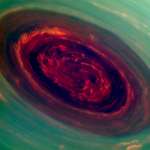 Saturn Hurricane
Saturn Hurricane
2.05.2013
Acquiring its first sunlit views of far northern Saturn late last year, the Cassini spacecraft's narrow-angle camera recorded this stunning image of the vortex at the ringed planet's north pole. The false...
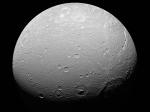 APOD: 2007 August 1- Unusual Cratering on Saturns Dione
APOD: 2007 August 1- Unusual Cratering on Saturns Dione
1.08.2007
Why does one half of Dione have more craters than the other? Start with the fact that Saturn's moon Dione always has one side that faces Saturn, and always has one side that faces away. This is similar to Earth's Moon.
 Natural Saturn On The Cassini Cruise
Natural Saturn On The Cassini Cruise
5.11.1998
What you could see approaching Saturn aboard an interplanetary cruise ship would closely resemble this subtly shaded view of the gorgeous ringed gas giant. Processed by the Hubble Heritage project, the picture intentionally avoids...
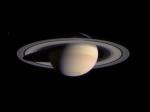 Cassini Closes in on Saturn
Cassini Closes in on Saturn
1.03.2004
Are they gone? They were not originally predicted to even be there. The mystery revolves around strange shadow-like spokes that appeared on Saturn's large B-ring, the large middle ring in the complex system of particles that orbits Saturn.
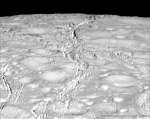 The Fractured North Pole of Saturns Enceladus
The Fractured North Pole of Saturns Enceladus
21.10.2015
The north pole of Saturn's moon Enceladus is unexpectedly fascinating and complex. Previous to the latest flyby of the robotic Cassini spacecraft, the northern region was known mostly for its unusually high abundance of craters.
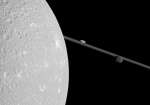 A Close Pass of Saturns Moon Dione
A Close Pass of Saturns Moon Dione
21.05.2012
What's that past Dione? When making its closest pass yet of Saturn's moon Dione late last year, the robotic Cassini spacecraft snapped this far-ranging picture featuring Dione, Saturn's rings, and the two small moons Epimetheus and Prometheus.
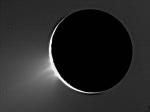 Ice Fountains Discovered on Saturns Enceladus
Ice Fountains Discovered on Saturns Enceladus
5.12.2005
Fountains of ice shoot out from Saturn's moon Enceladus. Clear discovery images of the fountains were made using observations from the robot Cassini spacecraft currently orbiting Saturn. During a recent pass, Cassini was programmed to look back toward the Sun where Enceladus would appear as a thin crescent.
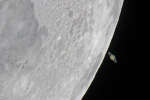 The Moons Saturn
The Moons Saturn
7.04.2013
Just days after sharing the western evening sky with Venus in 2007, the Moon moved on to Saturn - actually passing in front of the ringed planet Saturn when viewed in skies over Europe, northern Africa, and western Asia.
 6 Years of Saturn
6 Years of Saturn
4.09.2009
Today, planet Earth passes through the plane of Saturn's rings. From the perspective of earthbound astronomers, Saturn's rings will be edge-on. The problem is, Saturn itself is now very close to the Sun, low on horizon after sunset, so good telescopic images will be difficult to come by.
|
January February March April May June July |
|||||||||||||||||||||||||||||||||||||||||||||||||